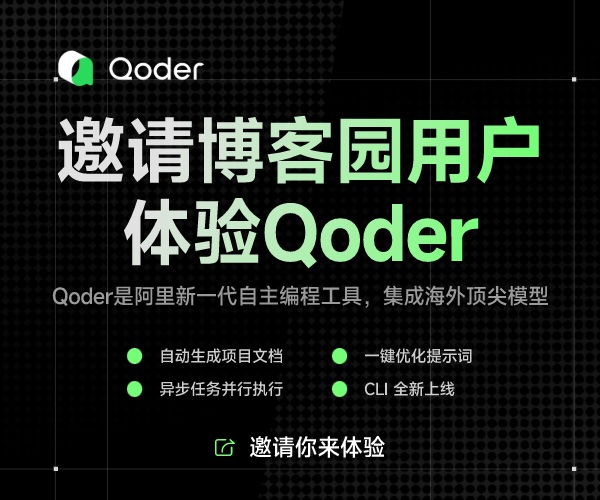坐標(biāo)系與基本圖元(2)
創(chuàng)建頂點(diǎn)緩沖區(qū)
在創(chuàng)建頂點(diǎn)緩沖區(qū)之前,需要先定義一個表示頂點(diǎn)的結(jié)構(gòu)類型,描述頂點(diǎn)保存格式的FVF和一個保存頂點(diǎn)的結(jié)構(gòu)數(shù)組。
struct sCustomVertex
{
float x, y, z, rhw;
DWORD color;
};
#define D3DFVF_CUSTOM_VERTEX (D3DFVF_XYZRHW | D3DFVF_DIFFUSE)
sCustomVertex vertices[] =
{
{ 100.0f, 400.0f, 1.0f, 1.0f, 0xffffff00, },
{ 300.0f, 50.0f, 1.0f, 1.0f, 0xff00ff00, },
{ 500.0f, 400.0f, 1.0f, 1.0f, 0xffff00ff, },
};
創(chuàng)建頂點(diǎn)緩沖區(qū)的函數(shù)IDirect3DDevice9::CreateVertexBuffer()聲明如下:
Creates a vertex buffer.
HRESULT CreateVertexBuffer(
UINT Length,
DWORD Usage,
DWORD FVF,
D3DPOOL Pool,
IDirect3DVertexBuffer9** ppVertexBuffer,
HANDLE* pSharedHandle
);
Parameters
- Length
- [in] Size of the vertex buffer, in bytes. For FVF vertex buffers, Length must be large enough to contain at least one vertex, but it need not be a multiple of the vertex size. Length is not validated for non-FVF buffers. See Remarks.
- Usage
- [in] Usage can be 0, which indicates no usage value. However, if usage is desired, use a combination of one or more D3DUSAGE constants. It is good practice to match the usage parameter in CreateVertexBuffer with the behavior flags in IDirect3D9::CreateDevice. For more information, see Remarks.
- FVF
- [in] Combination of D3DFVF, a usage specifier that describes the vertex format of the vertices in this buffer. If this parameter is set to a valid FVF code, the created vertex buffer is an FVF vertex buffer (see Remarks). Otherwise, if this parameter is set to zero, the vertex buffer is a non-FVF vertex buffer.
- Pool
- [in] Member of the D3DPOOL enumerated type, describing a valid memory class into which to place the resource. Do not set to D3DPOOL_SCRATCH.
- ppVertexBuffer
- [out, retval] Address of a pointer to an IDirect3DVertexBuffer9 interface, representing the created vertex buffer resource.
- pSharedHandle
- [in] Reserved. Set this parameter to NULL.
Return Values
If the method succeeds, the return value is D3D_OK. If the method fails, the return value can be one of the following: D3DERR_INVALIDCALL, D3DERR_OUTOFVIDEOMEMORY, E_OUTOFMEMORY.
Defines the memory class that holds the buffers for a resource.
typedef enum D3DPOOL
{
D3DPOOL_DEFAULT = 0,
D3DPOOL_MANAGED = 1,
D3DPOOL_SYSTEMMEM = 2,
D3DPOOL_SCRATCH = 3,
D3DPOOL_FORCE_DWORD = 0x7fffffff,
} D3DPOOL, *LPD3DPOOL;
Constants
- D3DPOOL_DEFAULT
- Resources are placed in the memory pool most
appropriate for the set of usages requested for the given resource. This is
usually video memory, including both local video memory and AGP memory. The
D3DPOOL_DEFAULT pool is separate from D3DPOOL_MANAGED and D3DPOOL_SYSTEMMEM,
and it specifies that the resource is placed in the preferred memory for
device access. Note that D3DPOOL_DEFAULT never indicates that either
D3DPOOL_MANAGED or D3DPOOL_SYSTEMMEM should be chosen as the memory pool
type for this resource. Textures placed in the D3DPOOL_DEFAULT pool cannot
be locked unless they are dynamic textures or they are private, FOURCC,
driver formats. To access unlockable textures, you must use functions such
as IDirect3DDevice9::UpdateSurface, IDirect3DDevice9::UpdateTexture,
IDirect3DDevice9::GetFrontBufferData, and
IDirect3DDevice9::GetRenderTargetData. D3DPOOL_MANAGED is probably a better
choice than D3DPOOL_DEFAULT for most applications. Note that some textures
created in driver-proprietary pixel formats, unknown to the Direct3D
runtime, can be locked. Also note that - unlike textures - swap chain back
buffers, render targets, vertex buffers, and index buffers can be locked.
When a device is lost, resources created using D3DPOOL_DEFAULT must be
released before calling IDirect3DDevice9::Reset. For more information, see
Lost Devices (Direct3D 9).
When creating resources with D3DPOOL_DEFAULT, if video card memory is already committed, managed resources will be evicted to free enough memory to satisfy the request.
- D3DPOOL_MANAGED
- Resources are copied automatically to device-accessible memory as needed. Managed resources are backed by system memory and do not need to be recreated when a device is lost. See Managing Resources (Direct3D 9) for more information. Managed resources can be locked. Only the system-memory copy is directly modified. Direct3D copies your changes to driver-accessible memory as needed.
- D3DPOOL_SYSTEMMEM
- Resources are placed in memory that is not typically accessible by the Direct3D device. This memory allocation consumes system RAM but does not reduce pageable RAM. These resources do not need to be recreated when a device is lost. Resources in this pool can be locked and can be used as the source for a IDirect3DDevice9::UpdateSurface or IDirect3DDevice9::UpdateTexture operation to a memory resource created with D3DPOOL_DEFAULT.
- D3DPOOL_SCRATCH
- Resources are placed in system RAM and do not need to be recreated when a device is lost. These resources are not bound by device size or format restrictions. Because of this, these resources cannot be accessed by the Direct3D device nor set as textures or render targets. However, these resources can always be created, locked, and copied.
- D3DPOOL_FORCE_DWORD
- Forces this enumeration to compile to 32 bits in size. Without this value, some compilers would allow this enumeration to compile to a size other than 32 bits. This value is not used.
創(chuàng)建頂點(diǎn)緩沖區(qū)的代碼如下:
g_device->CreateVertexBuffer(sizeof(vertices), 0, D3DFVF_CUSTOM_VERTEX, D3DPOOL_DEFAULT, &g_vertex_buffer, NULL);
現(xiàn)在,已經(jīng)創(chuàng)建了頂點(diǎn)緩沖區(qū)g_vertex_buffer,接下來把頂點(diǎn)數(shù)據(jù)vertices[]中保存的頂點(diǎn)數(shù)據(jù)復(fù)制到頂點(diǎn)緩沖區(qū)中:
void* ptr;
g_vertex_buffer->Lock(0, sizeof(vertices), (void**)&ptr, 0);
memcpy(ptr, vertices, sizeof(vertices));
g_vertex_buffer->Unlock();
IDirect3DVertexBuffer9::Lock()通知Direct3D將要對頂點(diǎn)緩沖區(qū)進(jìn)行內(nèi)存操作,并獲得頂點(diǎn)緩沖區(qū)的內(nèi)存指針,頂點(diǎn)數(shù)據(jù)復(fù)制完成后,IDirect3DVertexBuffer9::Unlock()通知Direct3D操作結(jié)束。
Locks a range of vertex data and obtains a pointer to the vertex buffer memory.
HRESULT Lock(
UINT OffsetToLock,
UINT SizeToLock,
VOID ** ppbData,
DWORD Flags
);
Parameters
- OffsetToLock
- [in] Offset into the vertex data to lock, in bytes. To lock the entire vertex buffer, specify 0 for both parameters, SizeToLock and OffsetToLock.
- SizeToLock
- [in] Size of the vertex data to lock, in bytes. To lock the entire vertex buffer, specify 0 for both parameters, SizeToLock and OffsetToLock.
- ppbData
- [out] VOID* pointer to a memory buffer containing the returned vertex data.
- Flags
- [in] Combination of zero or more locking flags
that describe the type of lock to perform. For this method, the valid flags
are:
- D3DLOCK_DISCARD
- D3DLOCK_NO_DIRTY_UPDATE
- D3DLOCK_NOSYSLOCK
- D3DLOCK_READONLY
- D3DLOCK_NOOVERWRITE
Return Values
If the method succeeds, the return value is D3D_OK. If the method fails, the return value can be D3DERR_INVALIDCALL.
Remarks
When working with vertex buffers, you are allowed to make multiple lock calls; however, you must ensure that the number of lock calls match the number of unlock calls. DrawPrimitive calls will not succeed with any outstanding lock count on any currently set vertex buffer.
The D3DLOCK_DISCARD and D3DLOCK_NOOVERWRITE flags are valid only on buffers created with D3DUSAGE_DYNAMIC.
For information about using D3DLOCK_DISCARD or D3DLOCK_NOOVERWRITE with IDirect3DVertexBuffer9::Lock, see Using Dynamic Vertex and Index Buffers.
參數(shù)Flags表示頂點(diǎn)緩沖區(qū)的加鎖屬性,它可以取0(默認(rèn)值)或者下表中任意值的邏輯或。
|
標(biāo)識符 |
說明 |
| D3DLOCK_DISCARD | 更新整個緩沖區(qū) |
| D3DLOCK_NO_DIRTY_UPDATE | 在默認(rèn)狀態(tài)下,對緩沖區(qū)加鎖會對該區(qū)域設(shè)置一個Dirty標(biāo)記。該屬性將不對該區(qū)域設(shè)置Dirty標(biāo)記,當(dāng)對緩沖區(qū)有特殊需要時使用。 |
| D3DLOCK_NOOVERWRITE | 保證不覆蓋緩沖區(qū)數(shù)據(jù),設(shè)置該屬性可以立即返回內(nèi)存指針,提高系統(tǒng)性能。 |
| D3DLOCK_NOSYSLOCK | 在加鎖過程中系統(tǒng)可以進(jìn)行其他操作 |
| D3DLOCK_READONLY | 設(shè)置緩沖區(qū)為只讀屬性 |
執(zhí)行Lock()函數(shù)需要一定的時間,默認(rèn)狀態(tài)下,Direct3D會暫停其他的顯示操作,直至Lock()函數(shù)執(zhí)行結(jié)束。設(shè)置D3DLOCK_NOSYSLOCK屬性,可以使Direct3D在執(zhí)行對緩沖區(qū)加鎖的同時執(zhí)行其他的顯示操作,比如移動鼠標(biāo)。



